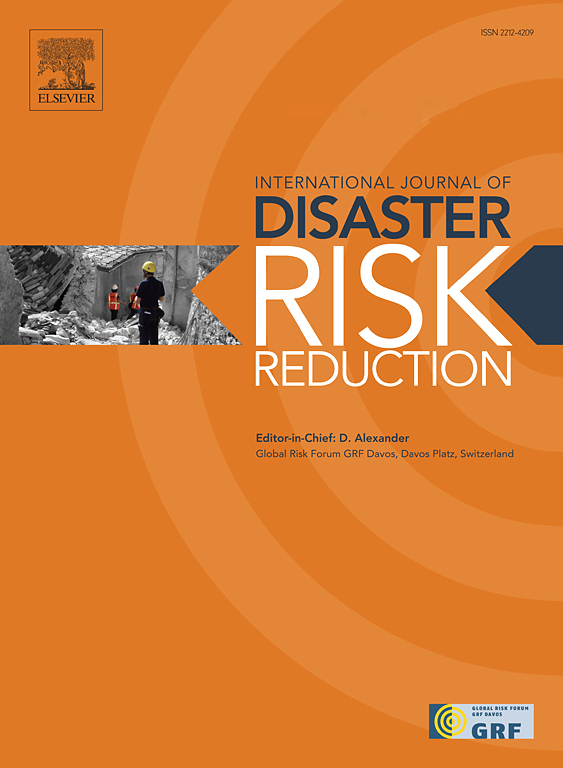A coastal risk analysis for the outermost small islands of Indonesia: A multiple natural hazards approach
IF 4.2
1区 地球科学
Q1 GEOSCIENCES, MULTIDISCIPLINARY
International journal of disaster risk reduction
Pub Date : 2025-03-14
DOI:10.1016/j.ijdrr.2025.105377
引用次数: 0
Abstract
Coastal risk analysis is important for the sustainable development and resilience of small islands. Even though there is an increasing effort to develop risk analysis at the global scale, the integration of multi-hazard, exposure, and vulnerability for outermost small islands is still rare. This study is the first to address the coastal risk on the outermost small islands of Indonesia, located at the country's territorial edge. The methodology quantifies hazard, exposure, and vulnerability variables, and collating the indices into a risk matrix. The results identify the full range of risk levels on outermost small islands represented in the island dataset, providing different approaches of addressing adaptation based on island's risk variables. Rote is identified with a Very High-risk level, while Makalehi has the highest hazard index, Bintan the highest exposure index, and Letti-Kisar the highest vulnerability index. Both coastal and geophysical hazards significantly influence risk, while economic land use impacts exposure. Infrastructure, including connectivity access and protection structures, plays a crucial role in vulnerability. The factors identified in this study, such as the highest hazard potentials, the most exposed variables, or the greatest vulnerability factors, could be used to craft policy recommendation that are designed and implemented to create island-specific adaptation strategies. In general, this study addresses a gap in current research, serving as a foundation for further investigation into coastal risk assessment. This study provides critical insights into the compounded risks faced by similarly outermost regions, offering transferable lessons for other developing archipelagic countries in enhancing their resilience.
求助全文
约1分钟内获得全文
求助全文
来源期刊

International journal of disaster risk reduction
GEOSCIENCES, MULTIDISCIPLINARYMETEOROLOGY-METEOROLOGY & ATMOSPHERIC SCIENCES
CiteScore
8.70
自引率
18.00%
发文量
688
审稿时长
79 days
期刊介绍:
The International Journal of Disaster Risk Reduction (IJDRR) is the journal for researchers, policymakers and practitioners across diverse disciplines: earth sciences and their implications; environmental sciences; engineering; urban studies; geography; and the social sciences. IJDRR publishes fundamental and applied research, critical reviews, policy papers and case studies with a particular focus on multi-disciplinary research that aims to reduce the impact of natural, technological, social and intentional disasters. IJDRR stimulates exchange of ideas and knowledge transfer on disaster research, mitigation, adaptation, prevention and risk reduction at all geographical scales: local, national and international.
Key topics:-
-multifaceted disaster and cascading disasters
-the development of disaster risk reduction strategies and techniques
-discussion and development of effective warning and educational systems for risk management at all levels
-disasters associated with climate change
-vulnerability analysis and vulnerability trends
-emerging risks
-resilience against disasters.
The journal particularly encourages papers that approach risk from a multi-disciplinary perspective.
 求助内容:
求助内容: 应助结果提醒方式:
应助结果提醒方式:


